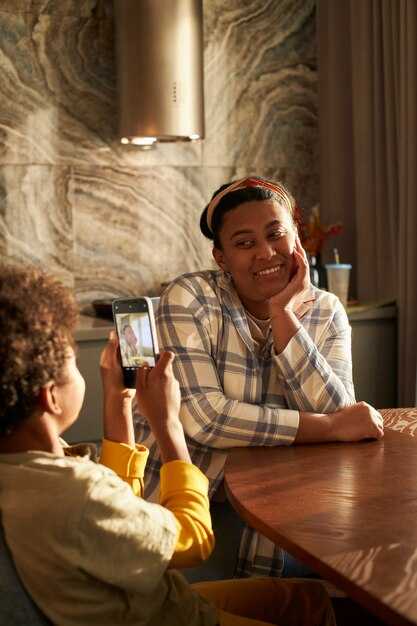Require a short live video verification within the first two conversations: ask the person to show a government ID and perform a simple gesture on camera for 10–15 minutes; if theyre evasive or wasnt able to join after three scheduled attempts, pause contact and document timestamps. Concrete rule: one verified live call plus two consistent chat sessions gives a baseline to identify inconsistencies.
Spend at least 5 minutes looking through public history and mutual connections before agreeing to meet. Reverse-image-search profile photos and compare posting times and locations; if photos were recently uploaded or the same image appears below multiple profiles, flag it. Spending 3–7 minutes on these checks typically reveals recycled pictures or mismatched past posts.
Arrange the first meeting in a public spot, tell a friend the exact address and expected end time, and share live location for the duration. Limit that meeting to 30–45 minutes and plan an exit: grab a coffee, walk around a familiar block, or ride your bike to the venue so you can leave on your own schedule. If a person named Laurel, or anyone else, pressures you to go somewhere private or tries to talk you down from those plans, treat that as a red flag.
Watch message patterns across times: scripted answers, requests for money, and sudden shifts to urgent stories are common scam markers. Keep a log of minutes spent, save screenshots, and subscribe to a reputable newsletter that posts verified scam alerts in your area. Remember to compare details from the call with written conversations to identify contradictions; small mismatches in lifestyle claims or past events are often the first sign something is off.
Online Dating Safety: 7 Practical Tips to Protect Yourself and Keep Life in Balance
Meet first in a public venue – cafés, transit hubs or busy parks – and set a 30–90 minute limit; arrange your own transport, share live location with one trusted contact, and avoid multi-hour first meetings that leave you stuck if things go down unexpectedly.
Before meeting, request a short live video call and ask a specific personal example tied to their job or hobby; a quick reverse-image check and reviewing linked social profiles helps confirm identity – if inconsistencies are found, report the profile to the platform immediately.
Never send money, gift cards, or financial details; scams often come with urgent stories or claims that someone wanted a loan – those requests are red flags. Take initiative for independent verification and stop contact when requests escalate; the platform newsletter says many reported scams follow the same script.
Keep boundaries to protect time and energy: if you’re working multi-hour shifts, schedule brief meetings between commitments and avoid cancelling work for an untested match. Finding balance means staying connected to friends, writing down meeting details, and limiting late-night meetups, especially for singles who travel elsewhere for dates.
Concrete checklist: 1) when matched, do a video or voice check; 2) meet public, 30–90 min only; 3) never transfer money; 4) tell one friend when going and when done; 5) save screenshots and report fakes; 6) unsubscribe from third-party newsletters elsewhere that request sensitive data. Practical advice shows small actions reduce risk and still leave room for a wonderful connection at the right stage, though trust should build gradually.
Verify Profiles and Photos Before Trusting Someone
Run a reverse-image search on these profile photos (Google Images, TinEye, Yandex) before replying; doing so will easily reveal duplicates, stock listings or reposts within minutes.
If a picture is found through agency pages, stock libraries or a photography academy gallery, treat that as a red flag: the profile says one thing while the image originates elsewhere. Choices for deeper checks include downloading the original image and reading EXIF metadata with exiftool or an online reader to see camera model and timestamp – note that many platforms strip metadata, so absence of EXIF is not proof of authenticity.
Ask the person to write a short, specific phrase and hold it next to their face in a selfie (for example: today + a random word you provide) or to send a 10–20 second video saying that phrase; request this within 24–48 hours. If they claim they’re “down” for a call but stall, or if talking and chatting produce only canned openers and one-line responses, that energy is telling and should make you think twice.
Cross-check personal accounts: look for consistent names, mutual friends, regular posts and location tags across Instagram, LinkedIn, Facebook. If the profile says they are working at a company but LinkedIn doesn’t show it, or bio details don’t match photos found elsewhere, that inconsistency matters. If you’re interested in verification beyond visuals, ask for a quick voice note or a short live call – real-time interaction exposes scripted replies.
If something looks off, stop chatting immediately, take screenshots, and report or block the account. Keep in mind that fraudsters can reuse real people’s photos; to understand risk, combine reverse-image results, metadata clues and live proof. When in doubt, ask for more specific verification and avoid sharing personal information until discrepancies are resolved.
Use reverse image search to confirm profile photos
Run a reverse image search on every new profile photo before you reply. Use Google Images (camera icon), TinEye, Bing Visual Search and Yandex: paste the image URL, upload the file or drag-and-drop a screenshot; record the top three matches and their source URLs and dates.
Look for clear red flags: the same picture appearing on many unrelated accounts, stock libraries, news articles or forums. For example, if a photo appears on a stock site or as a member photo on a travel blog from years earlier, treat that as suspicious. If you find nothing beyond the profile itself, that doesnt prove authenticity, but multiple unrelated hits (3+ different sites) mean extra scrutiny is needed.
Security consultants note specific signals: mismatched locations or timestamps, identical headshots used across couples or business profiles, profiles that have much less supporting content than expected, or photos that look professionally shot but the rest of the profile doesnt match. Keep in mind that a single matching social account where the person posts other everyday images is a positive signal; duplicates across stock agencies or modelling sites are telling signs of fabrication.
If youre talking to someone who used the photo, never accuse outright–present your findings calmly and ask for verification. Ask for a playful, time-stamped selfie (hold today’s date on your phone screen or make a specific gesture) and avoid waiting days to verify. If they refuse, block, report and preserve screenshots: efforts to verify and documented evidence help if you need to report the profile. If theyre genuinely interested, theyll comply; if they dont, that tells you quite a lot without further talk.
Check social media footprints for consistent details
Compare names, profile photos, locations and job titles across at least three platforms immediately; flag differences and ask for clarification straight away.
- Run reverse-image checks (Google Images, TinEye). If a photo is found on stock sites or attached to another identity, treat that as high risk and try to find alternate photos that match.
- Verify timeline and geotags: confirm account creation dates and post timestamps against shown locations–look for photos near a known local attraction or venue to validate presence.
- Confirm network and activities: check for repeated event photos with the same people, multiple check-ins or tagged posts; someone with only isolated images sometimes indicates a constructed profile.
- Assess messaging behavior: replies under an hour with specific facts are better; generic praise, evasive answers or refusal to answer straight questions are red flags.
- Small verification steps: request a 10–20 second live video or a selfie holding today’s date; a playful ask that they record themselves demonstrates initiative and cuts down uncertainty.
- Watch escalation patterns: moving conversations off-platform within an hour or pressure to share personal information before meeting usually signals caution is needed.
If you think something is off after these checks, best next step is to explore their other accounts and public posts; each inconsistency increases the sense of risk. If you’ve gotten conflicting information, pause contact and ask direct follow-ups.
Quick checklist below (mark +1 for each pass):
- Primary photo passed reverse-image check
- Timestamps/geotags align with claimed location
- At least two mutual contacts or repeated social photos
- Stated interests and activities corroborated across accounts
- Provides short live verification on request
Score 0–1: low trust–find clarifying information before continuing. Score 2–3: moderate–use three openers (where they live, favorite local activity, where a photo was taken) and evaluate answers. Score 4–5: higher confidence but keep first meetings public and test that details hold across multiple dates.
Ask specific, verifiable questions in chat
Ask three verifiable questions that require checkable facts and one direct link: current employer name, city of study, and a URL to a recent public post; use these answers to cross-check public records and their social accounts.
For security, request a short live video or a timestamped photo performing a simple action; dont accept generic images or screenshots. Keep in mind that evasive replies or long delays are reason to think twice and limit further contact – plan your next step before responding.
If they claim professional credentials such as therapist, licensed medical staff or an academy instructor, ask for license numbers, institutional email or faculty pages which you can verify; mismatched details usually produce poor results and should prompt follow-up questions.
Never send money or gift cards; requests for financial support are a frequent pretext. If they ask for money early, thats a red flag – dont jump into urgent narratives or promises of returns.
Limit how much personal data you share: exact address, full legal name, government IDs or account logins. Keep privacy boundaries and only share items you can independently verify; which pieces of information are necessary should be your decision.
Apply initiative and modest effort: spend 10–20 minutes per new contact verifying two independent sources. Perhaps run a reverse image search, read posts around claimed workplaces, and check public reviews to find corroboration.
If discrepancies remain, they should offer clear explanations; if not, deal one final time to request clarification then end contact. Ending communication preserves time and emotional investment and reduces risk to current relationship goals and to how you approach future relationships.
| Sample question | How to verify | Red flags / next action |
|---|---|---|
| “Who is your employer (company name)?” | Search company site or LinkedIn; compare title and start date with their profile. | Mismatched company or no public trace → ask for company email; limit contact if none. |
| “Where did you study (city and program)?” | Check alumni pages, program directories or school accounts; read public graduation lists. | Vague answers or conflicting cities → request a photo of an ID badge or faculty page. |
| “Can you share a link to a recent public post?” | Open the link, verify timestamps and content consistency across profiles. | Removed links or blank profiles → treat as high risk and reduce sharing. |
| “Do you have a professional license (e.g., therapist)?” | Check licensing board lookup or institutional directory for name and license number. | No record or refusal to provide details → decline to move forward and consider reporting. |
Spot signs of fake or stock images

Run a reverse-image search on every profile picture before you agree to a meeting: use Google Images, TinEye and Yandex; if the same picture was found on multiple sites or stock-photo libraries the profile wasnt real.
Apply simple verification rules: request a short live video or a selfie with a hand-written note and today’s date; static shots can’t reproduce natural motion, so if someone says they won’t send video then treat that refusal as a red flag.
Check EXIF/metadata with free tools – camera make, timestamps and GPS often expose inconsistencies. If the bio says she lives in Madrid but the picture EXIF lists a different country, that mismatch weakens credibility.
Inspect backgrounds for repeated venues, identical props or studio lighting; universal giveaways include perfect teeth, uniform bokeh and repeated skyline elements. Compare photo behavior with written messages for mismatched behavior and lack of genuine interest in activities shown in the picture.
Ask a straight, time-bound question (What were you doing this morning?) and then request a specific pose: hold a colored object, point to a clock, or angle the phone in a particular way – quick tasks prevent waiting and expose reused or stolen images. If Angela’s profile photo was found in a commercial portfolio, search for other accounts using the same file.
If you find something suspicious, pause contact and verify through a live call or linked social profiles; some consultants recommend cataloguing repeat matches and reporting stolen images to the platform where they were found, especially when multiple profiles use the same picture or something in the image contradicts the story you were told.


 Online Dating Safety – 7 Essential Tips to Protect Yourself">
Online Dating Safety – 7 Essential Tips to Protect Yourself">

 Decoding Male Behavior – How Guys Deal with Breakups and Cope">
Decoding Male Behavior – How Guys Deal with Breakups and Cope">
 9 Things to Say When Someone Asks Why Are You Still Single? — Witty, Confident Replies">
9 Things to Say When Someone Asks Why Are You Still Single? — Witty, Confident Replies">
 5 Love Languages – How We Give & Receive Love — Complete Guide">
5 Love Languages – How We Give & Receive Love — Complete Guide">
 Leading Co-Parenting App for More Peaceful Shared Parenting">
Leading Co-Parenting App for More Peaceful Shared Parenting">
 The 4 Phases of Modern Dating – Why They’re More Familiar Than You Think">
The 4 Phases of Modern Dating – Why They’re More Familiar Than You Think">
 120 Fun Date Night Ideas for Couples — Creative & Unique Adventures">
120 Fun Date Night Ideas for Couples — Creative & Unique Adventures">
 Have I Fallen Out of Love or Am I Depressed? How to Tell the Difference & Key Signs">
Have I Fallen Out of Love or Am I Depressed? How to Tell the Difference & Key Signs">
 300 Romantic Love Messages for Your Sweetheart — Sweet Texts & Quotes">
300 Romantic Love Messages for Your Sweetheart — Sweet Texts & Quotes">
 6 Proven Ways to Make a Great First Impression">
6 Proven Ways to Make a Great First Impression">
 How to Reject a Girl Honestly and Respectfully — The Least Painful Way">
How to Reject a Girl Honestly and Respectfully — The Least Painful Way">